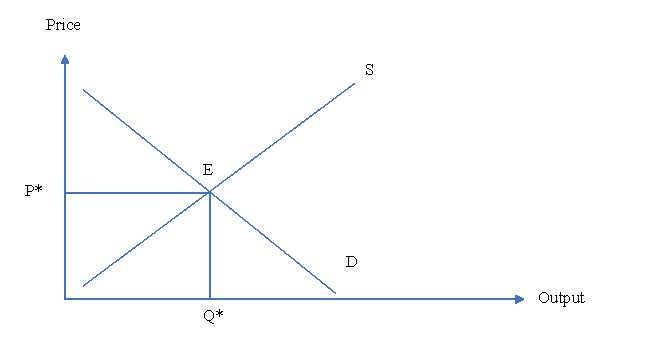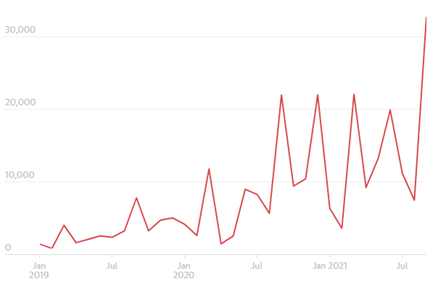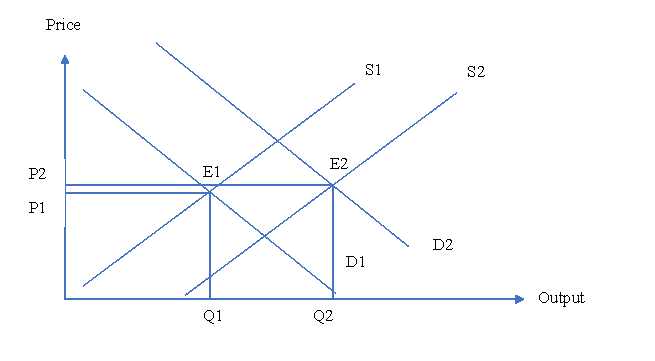Economics Assignment: Demand And Supply Framework Of United Kingdom Electric Vehicle Market
Question
Task:
This economics assignmentrequires you to write an individual essay by picking one of three options below:
Course work
All over the world there is an increased focus upon climate changes. There seems to be an agreement that one of the reasons is the use of fossil energy. Therefore, it is expected that there will be an increased focus upon reductions in the use of fossil energy.
A reduction of fossil energy can be achieved in two different ways. Either by improving the existing equipment so it gets more energy efficient or by development of new technology that doesn’t use fossil energy.
1. Explain the concept of demand and supply in relation to the UK market for electrical vehicles aimed for the transport sector. Include equations and diagrams in your answer.
Critically discuss how understanding of the concept of demand and supply could be useful for the management of a UK- based supplier of electrical vehicles for the transport sector.
2. Explain the structure and market conditions of the industry that supply the market with fossil energy aimed for the transport sector.
Critically discuss how demand/supply of fossil energy could be reduced. Suggest what might be done in relation to correct eventually market failures in the demand/supply of fossil energy, since the use is higher than desired by the government. Include relevant economic theories and models in your answer.
3. Discuss the potential macro-economic effects on the British economy related to changes in employment due to changes in the use of fossil energy mainly in the transport sector. Here effects related to distribution of alternative forms of energy and the effects on the garages could be treated.
Explain and discuss the possible effects on the overall economy in the UK, based upon changes in GDP due to changes in the overall employment. Please include and elaborate on relevant theories and models from the course in your answer.
Answer
Background Information of Economics Assignment
With the rise in fossil fuel price, and drying up of oil wells by next two decades has forced the automobile manufacturers to adopt alternative energy source to run their cars. As the most potential and viable alternative of fossil fuel driven transportation, electric battery driven car has come up in recent decade. Though the market of electric battery driven transportation is very low compared to the fossil fuel driven cars, however, their growth rate is very high. Marketsandmarkets.com (2021), in their report has demonstrated market size of Electric Vehicle (EV) will rise from 4093-thousand-unit sales to 34756-thousand-unit sales by 2030 with CSGR of 26.8% (thenationalnews.com 2021). This astonishing growth in EV industry is supposedly change the transportation market, as various government already has taken steps to increase the number of changing station and develop allied framework to support battery driven transportation system. UK in this regard is one step ahead compared to other developing or developed nations as the growth rate of shifting from fossil fuel driven transportation to EV transportation is very high here. Through the present study, analysis here has been done to understand the demand and supply framework of UK EV market. Using the demand and supply model for the EV suppliers, here factor analysis has also been done.
Concept of demand and supply:
Demand and supply are two main economic concepts developed by Alfred Marshall back in 1890 demonstrates the individual demand and supply framework. Demand schedule is the graphical presentation of the relationship between consumer demand of goods and services at a given price. This is a negatively sloped curve as there is a negative relationship between the price and demand of consumer. When the price rises, demand fall and when price fall, demand rises (figure 1) (Pandeyet al. 2020). On the other hand, supply schedule is a positively sloped curve that demonstrates the relationship between the price and supply of goods and services by the producers. As there is a positive association between the price and supply of goods and services, hence the supply curve is an upward bending curve (figure 1). Considering price in the vertical axis and output at horizontal axis, demand and supply framework is drawn. Most important aspect of the demand and supply framework is its ability of determining the market equilibrium. Market equilibrium as per the demand and supply model takes place where the demand and supply equate. At that point, there is no additional supply of goods or services and no shortage of the same (Statharaset al. 2019). Hence, whatever is produces, is consumed in the market making perfect equilibrium. In figure 1, market equilibrium takes place at point E, where the demand and supply equate at price P* and output at that point is Q*.

Figure 1: Demand and supply model
Now coming to the case of EV market, aggregate model of demand and supply can be used. Aggregate model considers the aggregate market demand and aggregate market supply to determine the market equilibrium. Unlike demand schedule, aggregate demand (AD) schedule represent the total demand of market at certain price. On the other hand, unlike supply schedule, aggregate supply (AS) schedule represents the total market supply at given price. However, in aggregate demand and supply model, demand curve is still negatively sloped, whereas, supply curve is positively sloped. Using the AD-AS model, UK EV market has been explained below (Pandeyet al. 2020).
Demand and supply framework for UK electrical vehicles market:
AD-AS model is beneficial in determining the market equilibrium of UK EV transportation market as it can depict the shifting of AS and AD schedule with the change in output, price, market demand and market supply. Hence, through this model, market equilibrium can also be explained at national level considering probable change due to change in factors (Berkeley et al. 2018).
UK EV market has faced rapid growth during the 2020 where market share of EV registration has increased from 1.1% to 5.2%. Out of total car sold in the UK, 15% were pure EVs and 11% were hybrid vehicle (ev-database.uk 2021). As per the figure 2, it can be seen that demand of the EV vehicle in the UK market has gained pace since July and September 2020 market astonishing result for EV market of UK. During September alone UK market registered sales of EV which is same as total sales during last one decade in the UK market. Major factors that have influenced the demand of the EV cars in the UK market are the shortage of the semiconductors and lower production of the fossil fuel-based cars for transportation. Moreover, there has been pandemic during 2020, that influenced the people to move towards greener technology (Pandeyet al. 2020). With ban on the fossil fuel-based transportation by 2030 in the UK, people are also considering to shifting to newer greener technology that has influenced the higher sales of EV in the UK market (Earl and Fell 2019).

Figure 2: Sales of EV vehicle in UK during 2021
Source: (theguardian.com 2021)
On the other hand, when the supply of the EV is considered, then it can be seen that with the rise in the demand, there has been rise in the price of EV in UK market too. Apart from this, number of EV manufacturers has increased substantially during the last one decade. There are now at least eight top auto manufacturers that operate in the UK market (Pandeyet al. 2020). Hence, the supply has increase subsequently and the government policies has provided much amount of room to expand the business in UK market. Strong consumer interest of purchasing EV due to government backed program and availability of the charging station at close proximity by the different auto brands has allowed the manufacturers to show high interest and confidence in marketing EV vehicles in the UK market causing rise in the aggregate supply in the market (theccc.org.uk 2021).
Considering the situation of EV market in the UK market, it can be represented as per figure 2.As per the figure 3, it can be seen that initial equilibrium takes place at E1 where the output is Q1 and price is P1. Now, considering the increased the market demand AD curve shifts from D1 to D2 and with increased price and market demand, supply curve shifts from S1 to S2. Thus, new equilibrium takes place at E2, where the price is P2 and output is Q2. As per the EV market, it can be seen that the market has high elasticity as a small change in price can alter the demand to a great extent. Hence, though the output changed from Q1 to Q2, price only changed by P1P2 amount.

Figure 3: AD-AS framework of UK EV market
Thus, considering the supply and demand framework, UK EV market can be explained very well. It depicts that if the price change market will face high change in output. And subsequent change in demand of the EV will influence the UK EV market.
Use of demand and supply model for electric vehicle supplier:
An EV works on power not at all like fossil fuel-based automobile. Rather than gas powered motor, these vehicles run on an electric engine that requires consistent stockpile of energy from batteries. There is an assortment of batteries utilised in these vehicles. These incorporate lithium particle, liquid salt, zinc-air, and different nickel-based plans. Electric vehicles were principally intended to supplant ordinary methods of movement as they lead to natural contamination (Marketsandmarkets.com 2021). Electric vehicles have acquired prominence attributable to various mechanical headways. The electric vehicle outflanks the ordinary vehicle giving higher efficiency, low fossil fuel by-product and support, comfort of charging at home, smoother drive, and decreased sound from motor (Statharaset al. 2019). There are three sorts of electric vehicles-battery, mixture, and module cross breed electric vehicles (Checnet al. 2020). What's more, electric vehicles require no motor oil changes except for are somewhat costly than their fuel counterparts.Electric vehicles utilise at least one than one electric engines or footing engines for drive. The electric vehicles are controlled either by an authority framework through power from charging station organizations or can be charged by self-charging gadgets, for example, regenerative stopping mechanisms and turbochargers.
There are various factors ranging from the government program to efficiency of the EVs that influence the demand and supply of the market.
Factors the influence the demand of electric vehicle:
As the major factor of influence of demand of electric vehicle are as follows:
Increase in the fuel efficiency:
EVs are run only with the electric power and the power model is sustainable in nature compared to the fossil fuel-based transportation. EVs can convert 50% of the grid energy in motion energy, whereas, fossil fuel-based cars can only transform 17% to 21% of fuel energy into motion energy (alliedmarketresaerch.com 2021).
High performance at low carbon emission:
UK transport is currently producing highest amount of greenhouse gas (GHG) accounting for 22% of total GHG production (ev-database.uk 2021). Urgent activity is needed to drive down. transport discharges, as they have remained to a great extent level beginning around 1990. In spite of the fact thatvehicles have become more eco-friendly; this has been balanced by expanding travel demand.Emissions from transport and from traveller vehicles should beslice by more than 70% to meet the Sixth Carbon Budget, which puts down a boundary on UKdischarges during the 2030s to keep focused to meeting Net Zero by 2050 (heycar.co.uk 2021).
EVs run at a low cost compared to the fossil fuel making it most fuel-efficient transportation option. For the EV, energy efficiency estimation is 90% means only 10% loss of electricity store in battery (thenationalnews.com 2021). UK models is expected to provide 235 miles range, making 240 Wh/mi mileage (thenationalnews.com 2021). Though this is lower than world average of 304 Wh/mi, yet it is highly efficient compared to the fossil fuel (thenationalnews.com 2021).
Manufacturing cost:
Cost of manufacturing EV compared to conventional vehicle is high. However, when the efficiency and mileage is considered, then it can be seeing that price is comparatively low. However, price of the EVs in UK markets is expected to fell by 2027 with increase in the supply and in present time it is increasing as the supplier is limited and the technology is comparatively new (Hasan 2021).
Technological development:
EVs are latest technology that has been operating in the automobile industry. It has low or no emission making it most green vehicle. Moreover, additional technologies like battery replacement on the go allow EVs range to expand at minimal cost.
Managerial use of demand and supply framework:
Underpinning the above analysis of the demand and supply model, it can be seen that UK EV market is influenced by the various factors. Government policies, EV production cost, technological advantage over fossil fuel-based transportation and high-performance level are the major factor that influenced the supply. On the other hand, shortage of the chips for manufacturing as well as the shifting of consumer preference towards the greener technology has enabled the producer to face increased demand. Considering these factors of influence, it can be mentioned that there is vast scope from managerial perspective to shape the future of EV market in UK.
UK government has already put cap on fossil fuel-based car sales from 2030 and this will inevitably force the consumers to shift to EVs (ev-database.uk 2021). Thus, most importantly, government should provide fund to increase the availability of the charging station in different places around UK. Reinforcing the distribution network and priding fair funding model for smart charging is needed also. Policy makers also need to understand that keeping price as close to fossil fuel-based transportation will make the transition smooth. If the price is higher than fossil fuel-based transportation, then people will prefer to continue with the gas-based transportation. As the private entity is also a major stakeholder in the transition program in UK transportation industry, thus, they should also understand and take necessary steps to influence the market. Developing long term EV strategies is crucial for implementing the EV policies in UK; thus, underpinning the major influential factors, strategy development can also be done.
Conclusion:
As per the above analysis, it can be seen that EV market of UK is one of the fastest changing market. With highest registered sales in 2020, UK EV market demonstrated phenomenon change in recent time. As per the demand and supply framework it can be seen that EV market can be explained very well. Elasticity of the EV market found to be very high and a small change in price can lead to high change in the output. Supply is mainly influenced by the factors like government policies, EV production cost, technological advantage over fossil fuel-based transportation and high-performance level are the major factors. Underpinning the factor of market supply, study has found its managerial implications too. As per the study it has been found that factors of influence will help the policy makers of UK to produce long term strategy of EV, electric charging station policy and benefit policy of up taking EV compared to gas-based transportation.
Reference:
alliedmarketresearch.com 2021.Electric Vehicle Market Size, Share, Analysis, Growth by 2027. https://www.alliedmarketresearch.com/electric-vehicle-market
Berkeley, N., Jarvis, D. and Jones, A., 2018. Analysing the take up of battery electric vehicles: An investigation of barriers amongst drivers in the UK. Transportation Research Part D: Transport and Environment, 63, pp.466-481. https://core.ac.uk/download/pdf/228154742.pdf
Chen, T., Zhang, X.P., Wang, J., Li, J., Wu, C., Hu, M. and Bian, H., 2020.A review on electric vehicle charging infrastructure development in the UK. Journal of Modern Power Systems and Clean Energy, 8(2),
pp.193-205.https://ieeexplore.ieee.org/iel7/8685265/8816648/09028778.pdf
Earl, J. and Fell, M.J., 2019. Electric vehicle manufacturers' perceptions of the market potential for demand-side flexibility using electric vehicles in the United Kingdom. Energy Policy, 129, pp.646-652.https://discovery.ucl.ac.uk/id/eprint/10069542/1/Revised%20manuscript_to%20deposit%20at%20UCL.pdf ev-database.uk 2021. EV Database. https://ev-database.uk/cheatsheet/energy-consumption-electric-car Hasan, S., 2021.Assessment of electric vehicle repurchase intention: A survey-based study on the Norwegian EV market. Transportation Research Interdisciplinary Perspectives, 11, p.100439. https://www.sciencedirect.com/science/article/pii/S2590198221001457
heycar.co.uk 2021.Electric car statistics - data and projections [Updated Nov 2021] | heycar.https://heycar.co.uk/blog/electric-cars-statistics-and-projections Marketsandmarkets.com 2021. Electric Vehicle Market Growth, Industry Trends, and Statistics by 2030.https://www.marketsandmarkets.com/Market-Reports/electric-vehicle-market-209371461.html
Pandey, D., Manocha, D. and Saini, D., 2020. A study on an automobile revolution and future of electric cars in india. Economics assignmentInternational Journal of Management (IJM), 11(3).https://www.researchgate.net/profile/Pankaj-Saini-7/publication/348404057_A_STUDY_ON_AN_AUTOMOBILE_REVOLUTION_AND_FUTURE_OF_ELECTRIC_ CARS_IN_INDIA/links/5ffd2538a6fdccdcb84a4aee/A-STUDY-ON-AN-AUTOMOBILE-REVOLUTION-AND- FUTURE-OF-ELECTRIC-CARS-IN-INDIA.pdf Statharas, S., Moysoglou, Y., Siskos, P., Zazias, G. and Capros, P., 2019. Factors influencing electric vehicle penetration in the EU by 2030: A model-based policy assessment. Energies, 12(14), p.2739.https://www.mdpi.com/1996-1073/12/14/2739/pdf Theccc.org.uk. 2021. The UK’s transition to electric vehicles https://www.theccc.org.uk/wp-content/uploads/2020/12/The-UKs-transition-to-electric-vehicles.pdf
theguardian.com 2021.UK car sales plunge but electric vehicles soar to record amid fuel crisis. https://www.theguardian.com/business/2021/oct/05/uk-car-sales-electric-vehicles-petrol-crisis-chip-shortage thenationalnews.com 2021. Electric vehicle demand soars in UK as traditional motors reverse. https://www.thenationalnews.com/business/economy/2021/09/06/electric-vehicle-demand-soars-in-uk-as-traditional-motors-reverse/












